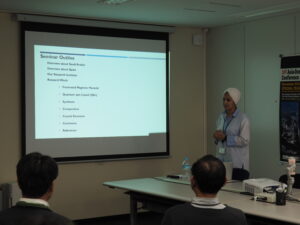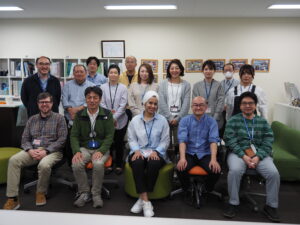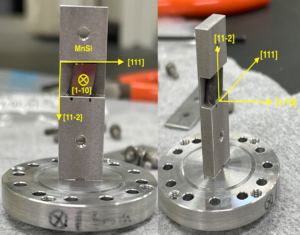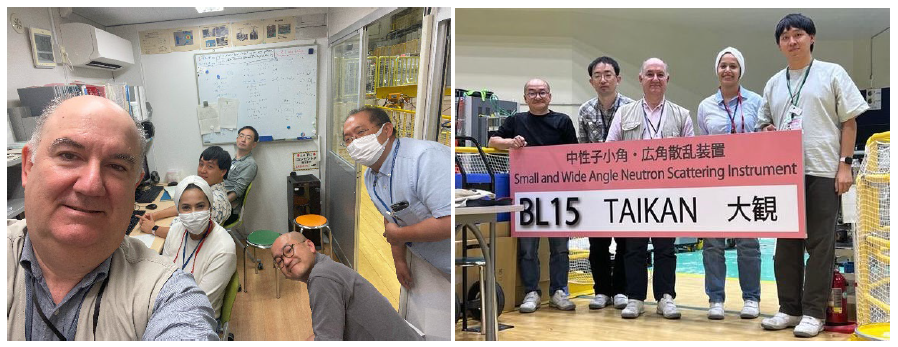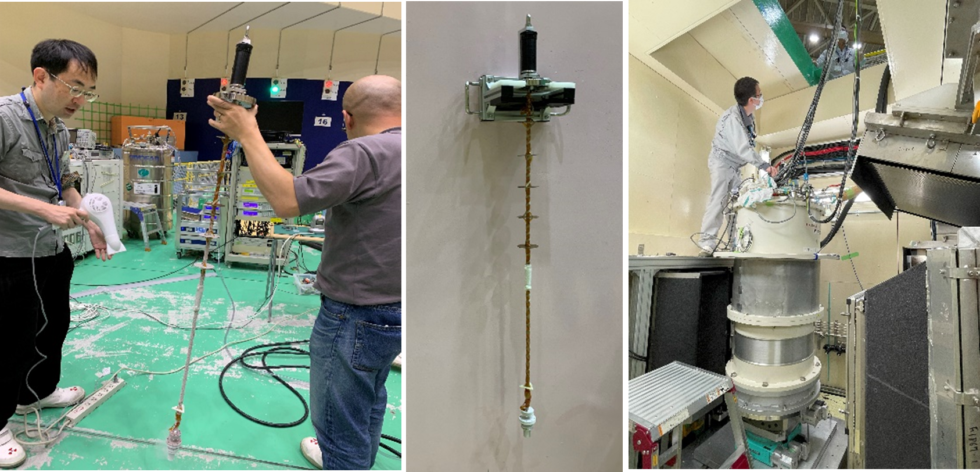2023.08.07
CROSS研究生体験記 マドリード・コンプルテンセ大学 Alshalawi氏
マドリード・コンプルテンセ大学
博士後期課程3年 Dhoha Rashed Alshalawi
I am Miss Dhoha Alshalawi, a last-year doctoral student at the Institute of Applied Magnetism (IMA), Complutense University of Madrid. My research stay has been from 17th April to 14th July 2023. It took place at CROSS under the guidance of Dr. Kazuki Ohishi-san. Dr. Kazuki Ohishi-san gave me a hand on some parts of my thesis. Here I will focus on two parts achieved during the three-month research stay.
First part: The refinement of the crystal structure of the compound Ca10Cr7O28.
In November 2021, three of my synthesized materials were measured using Time of Flight (TOF) neutron diffraction equipment iMateria BL-20 in J-PARC. The title of the measurement proposal was “Accurate determination of the atomic oxygen positions in the high quality (x=0, 1) Quantum Spin Liquids (QSL)”. The measurement was performed with the collaboration and consultation team of Dr. Kazuki Oishi-san, Prof. Akinori Hoshikawa-san, and Prof. Javier Campo.
The measurement was performed for three synthesized powder oxide Quantum Spin Liquid Materials (QSL). The measurement was aimed to confirm the crystal structure of the material and determine the oxygen positions more accurately that previously determined by X-ray Diffraction (XRD). Specifically, these samples are the pure sample of Ca10Cr7O28 with a ratio (2.85), and the sample Ca10Cr7O28 with impurities that synthesized with a ratio (3:1). Also, it was interesting to determine the crystal structure for the new doped sample Ca9Na1Cr7O28 that was synthesized for the first time.
The measurement was accomplished for the three samples for temperature range from 3 to 300 K. This measurement is essential to complete my Ph.D. thesis.
The Time of Flight Diffraction (TOFD) patterns were refined using Rietveld refinement method in FullProf software. At the beginning of the research stay, I presented my Ph.D. research work in seminar at CROSS. I presented the result obtained from the refinement and characterization TOFD patterns. Then I presented my final work and result with CROSS expert to consult and discuss and received good comments that would help me with the result and any suggestions for future work. Also, I presented refinement data in more details in private discussion meeting to group of Dr. Kazuki Oishi-san, Prof. Akinori Hoshikawa-san, and Prof. Javier Campo. These regular meetings help me to achieve the correct refinements data, determine the crystal structure, and characterize magnetic properties for the material. After that, I determined the temperature variation curves with error bars of the atomic distances and unit cell parameters. Characterizing QSL material experimentally is a complicated and challenging topic globally. These materials have unique structures and properties, and the properties behind the QSL material performance are still mysterious. During the stay, I could confirm the crystal structure and define material spin fluctuates mechanism in low temperatures.
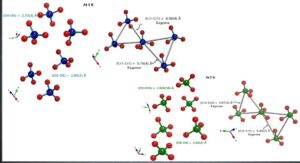
Figure 2: The calculated atomic distances for magnetic chromium Cr1 and Cr2 atoms in Ca10Cr7O28 that were measured at temperature 5 K using TOF iMateria BL-20.
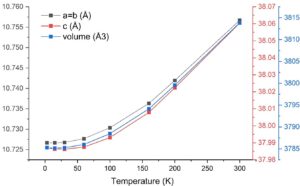
Figure 3: The variation curves of unit cell parameters a=b (dark gray), c (red), and cell volume (blue) at thermal variation from temperature 3 K to 300 K based on Neutron Time of Flight result for sample Ca10Cr7O28.
Second part: Measuring, changing samples, and reorientation for single crystal sample of Cubic Helimagnets B20 Chiral Magnets material at TAIKAN BL-15
I discovered the neutron experimental facilities physically for the first time. I could participate in the experiment proposal titled “New topological magnetic textures of enantiopure B20 chiral helimagnets at low temperatures.”
*Research Trend, Materials, and Aim of the Measurement:
Chiral magnets, such as MnSi and Fe1-xCoxSi (x = 0.25), have emerged as promising candidates for novel spintronic devices due to their unique magnetic properties and topological features. These materials exhibit magnetic textures of skyrmion lattices (SkL), which are protected by topological properties and can be controlled by external factors like magnetic fields and temperature. The Dzyaloshinskii-Moriya (DM) interaction in cubic helimagnets like MnSi and Fe1-xCoxSi leads to the formation of canted or helimagnetic structures, including the SkL phase just below the critical temperature TC. The main goal of the research project is to investigate and characterize a newly identified magnetic phase, termed the “B-phase,” that appears near the critical field Hc at low temperatures. The specific aim is to determine the nature of this “B-phase” by performing detailed measurements and analyzing the behavior of the magnetic helices within these materials. These materials were synthesized by Dr. Yusuke Kousaka-san.
*Measurement Techniques and Experimental Approach:
The measurement was performed using Small-Angle Neutron Scattering (SANS) experiments using the TAIKAN instrument to achieve research project goal. SANS is a powerful technique that allows for the analysis of nanoscale structures and provides insights into the arrangement of magnetic textures. The TAIKAN instrument, with its wide-q range measurement capability, is particularly suitable for studying the complex magnetic structures in MnSi and Fe1-xCoxSi (x = 0.25) compounds. The SANS performed experiments in the region where the “B-phase” was observed, and the obtained results indicated the presence of conical helical imprints, possibly linking the “B-phase” to the conical helix (CH) phase.
At the end of the research stay, I presented a final seminar of our achievement and result from the SANS experiment and characterization of sample Ca10Cr7O28. The presented seminar to CROSS member helped me to discuss and received good comments and suggestions that would help me with improving the result and for further future work.
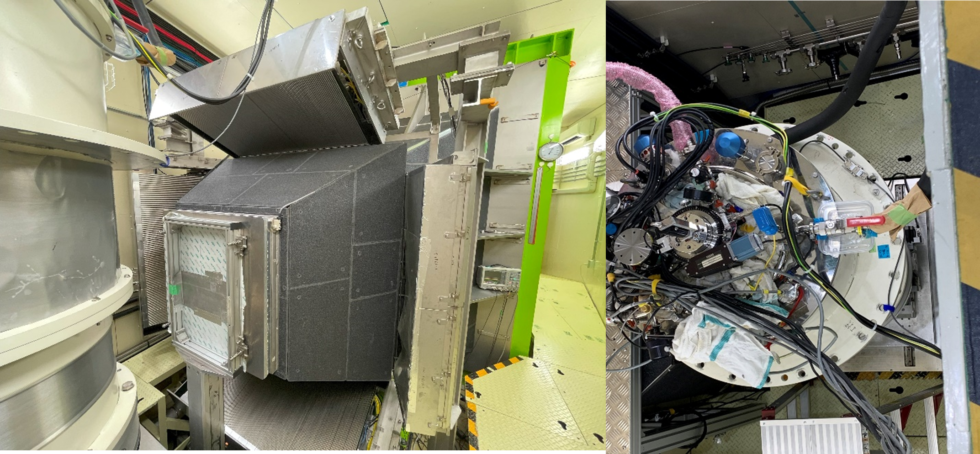
Figure 5: (left) Close look at the instrument BL-15 Small and Wide-Angle Neutron Scattering Instrument (TAIKAN) and (right) 7 T superconducting magnet on the sample stage at TAIKAN.

Figure8: (left) Group photo of the seminar attendees. (right) Receiving research stay certificate from presedent Prof. Mitsuhiro Shibayama-san and Dr. Kazuki Ohishi-san.

